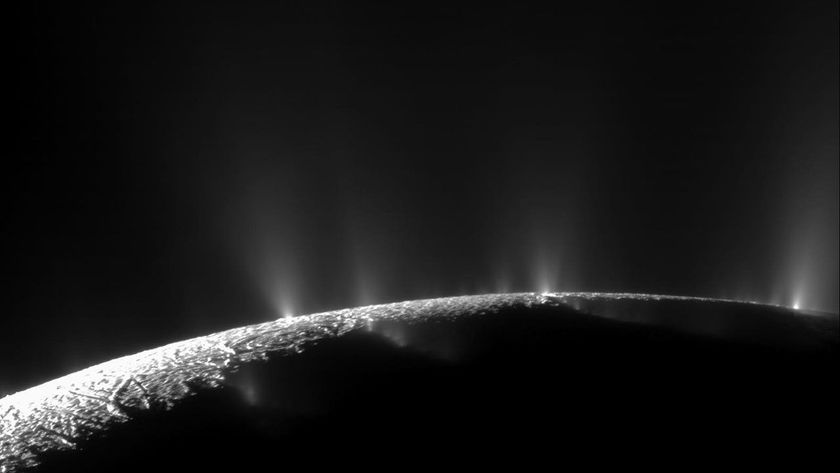Saturn Ringed by Electric Doughnut
Homer Simpson, meet your match in space: Astronomers have confirmed the existence of a lopsided "doughnut" of electrified plasma surrounding Saturn.
The giant ring current, as the doughnut is called, was confirmed following analysis of recent Cassini spacecraft data. But the new information adds a twist to the electric phenomenon, which extends more than 746,000 miles (1.2 million kilometers) into space: It rotates.
Don Mitchell, an astrophysicist at Johns Hopkins University and co-author of a new study detailed in the Dec. 13 issue of the journal Nature, revealed his team's initial findings at a conference earlier this year, but said the new study now confirms them. He explained that most of Saturn's ring current plasma comes from its ice-spewing moon Enceladus.
"Earth's ring current is made of upper atmosphere and solar wind particles, so it's mostly hydrogen," Mitchell said. "But Saturn's source is by and large Enceladus, which shoots out a whole lot of oxygen in the form of water."
Mitchell explained that sunlight zaps the water and turns it into charged particles called ions, which Saturn's magnetic field captures and turns into a tube of energized plasma. The pressure of the solar wind, however, smears the night-side half of the ring into a sheet of plasma that continuously drifts into space.
Unlike Earth's relatively stationary ring current, however, Saturn's rotates with the planet, Mitchell said.
"Earth rotates pretty slow compared to the speed of the ring current particles, so the thing is stationary," he said. But Saturn rotates more than twice as fast as Earth, dragging Saturn's heavy oxygen ions around the planet in a counter-clockwise direction.
Sign up for the Live Science daily newsletter now
Get the world’s most fascinating discoveries delivered straight to your inbox.
Although the Cassini data resolves the mystery of Saturn's ring—which the existence of, Mitchell said, was only speculative 25 years ago—it has uncovered a new one.
"There's a point during the rotation where we see an energy spike, so there's something special about a particular spot on Saturn," he said. "For now, though, we don't know what it could be."













